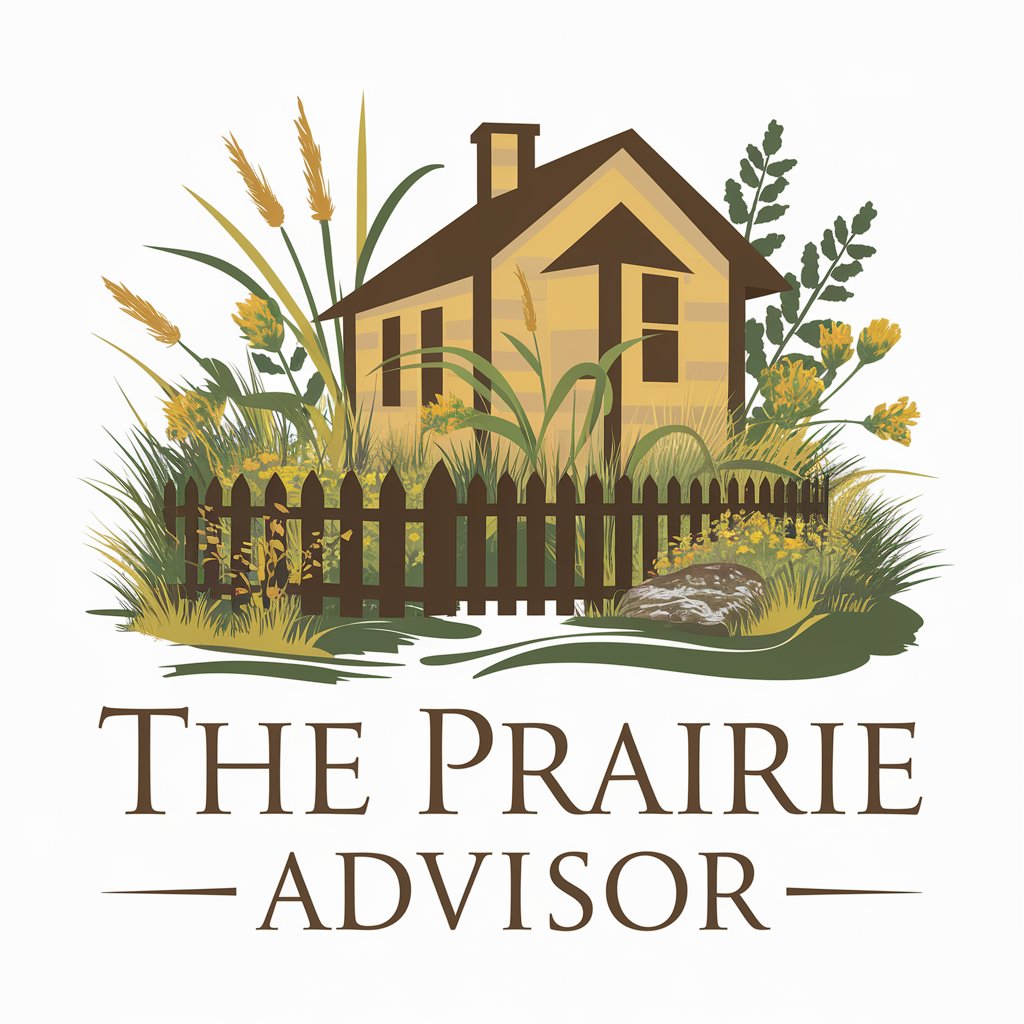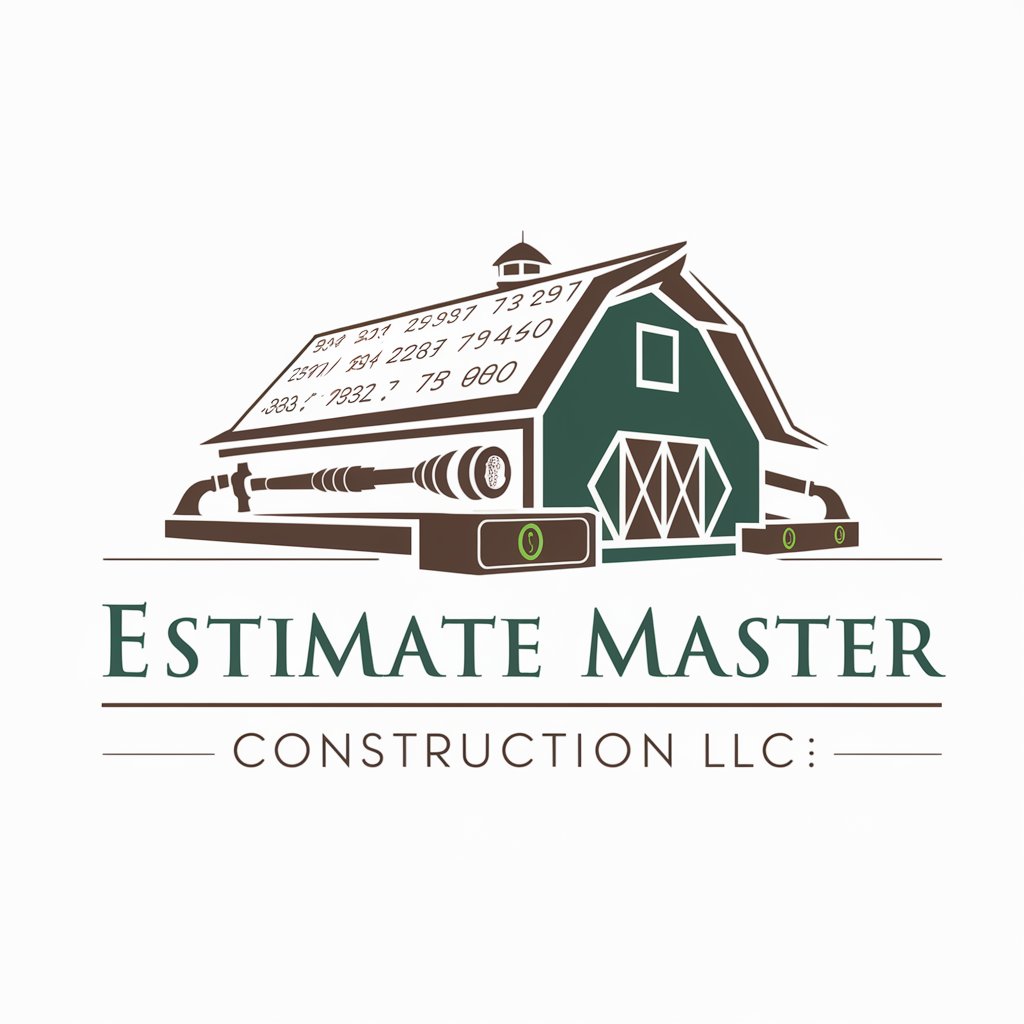
The Prairie Advisor - Prairie Planning Tool

Welcome! Let's transform your space into a thriving prairie.
Revive landscapes with AI-powered prairie planning.
How can I start converting my lawn into a native prairie garden?
What native plants are best suited for a prairie in my region?
What are the essential steps in preparing my site for prairie planting?
How can I manage weeds effectively during the first few years of my prairie project?
Get Embed Code
Overview of The Prairie Advisor
The Prairie Advisor is a specialized tool designed to assist individuals in transforming various spaces into biodiverse, low-maintenance prairies, particularly in suburban settings. It provides expert guidance on planning, establishing, and maintaining prairies with an emphasis on native plant selection, soil preparation, and sustainable maintenance strategies. For example, if someone in the Midwest wants to convert their backyard into a prairie, The Prairie Advisor can recommend specific native grasses and forbs suitable for their soil and climate conditions, guide them through site preparation, and advise on long-term maintenance practices such as controlled burns or mowing schedules. Powered by ChatGPT-4o。

Key Functions of The Prairie Advisor
Plant Selection
Example
Recommending specific native species like Purple Coneflower or Big Bluestem grass based on the local climate and soil conditions in Illinois.
Scenario
A homeowner wants to attract local wildlife and improve biodiversity in their garden through native plantings.
Site Preparation Guidance
Example
Providing step-by-step instructions for soil amendment and weed control to prepare a garden in Ohio for prairie planting.
Scenario
A new homeowner wants to convert a previously landscaped yard into a native prairie.
Maintenance Strategies
Example
Advising on annual mowing schedules or periodic controlled burns to manage a mature prairie in Minnesota.
Scenario
A land manager needs to maintain a large prairie restoration project to ensure health and longevity of the native plant community.
Ideal Users of The Prairie Advisor
Homeowners
Individuals looking to transform their home gardens into environmentally friendly, low-maintenance landscapes that promote local flora and fauna.
Landscapers
Professional gardeners and landscapers interested in expanding their services to include sustainable, native plant-based designs.
Ecological Planners
Urban planners and ecological consultants who need expert advice on integrating native prairie elements into public spaces or large-scale restoration projects.

Using The Prairie Advisor: A Step-by-Step Guide
Step 1
Visit yeschat.ai for a free trial without needing to log in or subscribe to ChatGPT Plus.
Step 2
Identify your prairie project's goals, such as increasing biodiversity or enhancing landscape aesthetics, to guide the selection of plants and layout.
Step 3
Consult the extensive resources provided, including plant selection guides and site preparation techniques tailored to different environmental conditions and locales.
Step 4
Utilize the tool to create and refine your planting plan, taking advantage of its suggestions for soil preparation, seed mix composition, and maintenance practices.
Step 5
Engage with the support features, like direct Q&A with experts or access to community forums, for additional advice or to address specific challenges in your prairie project.
Try other advanced and practical GPTs
Yueju opera
Explore the artistry of Yueju Opera with AI

Trek Wizard
Streamline Your Journey with AI

Greenery Planning Topographer
Craft Landscapes Smartly with AI

Master Board Game Inventor
Empower Your Creativity with AI

Cinema Sage
Unlock the World of Cinema with AI

Dream Weaver
Unlock the secrets of your dreams with AI

Prairie Market Insights
Decipher Market Trends with AI

Estimate Master
Precision Estimating, AI-Enhanced

Singapore Explorer
Explore Singapore with AI

Domain Name Generator Pro
AI-powered domain names made easy.

Introvert Networking Trainer
Empowering Introverts with AI-Powered Networking Skills

Surviving as an Introvert: Self-Guided Guru
Empowering Introverts via AI

Frequently Asked Questions About The Prairie Advisor
What makes The Prairie Advisor unique in prairie restoration?
The Prairie Advisor specializes in converting suburban spaces into thriving prairies using native plants, focusing on biodiversity and low-maintenance landscapes tailored to local conditions.
Can The Prairie Advisor help select plants for specific soil types?
Yes, it offers detailed recommendations for plant species that thrive in various soil conditions, from clay to sandy loam, ensuring successful establishment and growth of native prairies.
Does The Prairie Advisor support prairie projects outside of the suburban areas?
While primarily designed for suburban settings, The Prairie Advisor also provides guidance for rural and urban prairie projects, adaptable to different scales and environmental contexts.
How does The Prairie Advisor handle non-native plants?
The tool recommends non-native species only when they complement the native flora without being invasive, ensuring they support the ecosystem's overall health and resilience.
What support does The Prairie Advisor offer for long-term prairie maintenance?
It provides long-term management strategies, including seasonal care, pest management, and reseeding advice to maintain the vitality and diversity of established prairie landscapes.